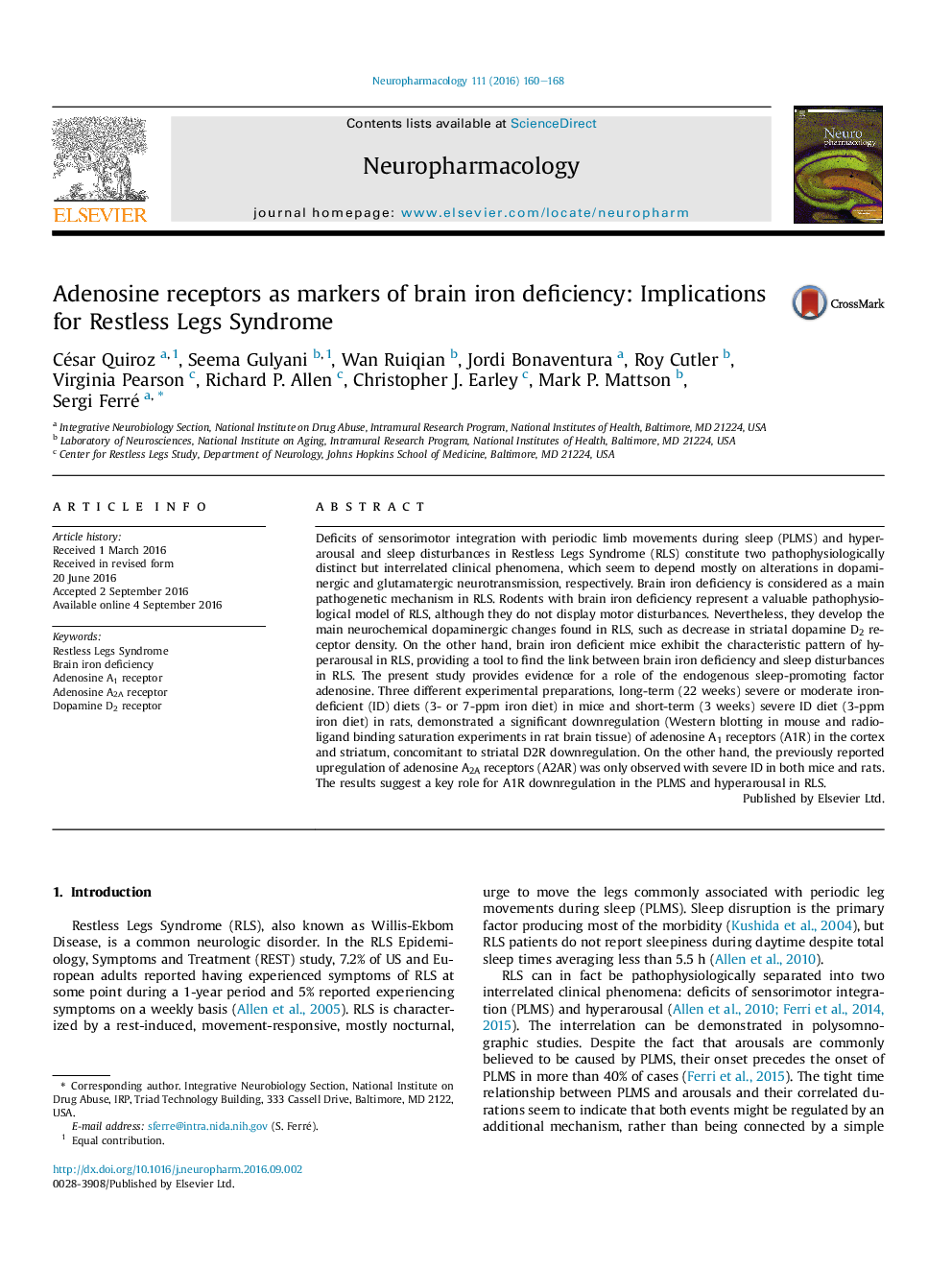| کد مقاله | کد نشریه | سال انتشار | مقاله انگلیسی | نسخه تمام متن |
|---|---|---|---|---|
| 2493085 | 1556604 | 2016 | 9 صفحه PDF | دانلود رایگان |
• Brain iron deficiency (BID) in rodents is a valid pathophysiological model of RLS.
• BID was previously shown to cause upregulation of adenosine A2A receptors (A2AR).
• We demonstrate that BID also causes downregulation of adenosine A1 receptors (A1R).
• A1R downregulation can constitute a key pathophysiological factor in RLS.
Deficits of sensorimotor integration with periodic limb movements during sleep (PLMS) and hyperarousal and sleep disturbances in Restless Legs Syndrome (RLS) constitute two pathophysiologically distinct but interrelated clinical phenomena, which seem to depend mostly on alterations in dopaminergic and glutamatergic neurotransmission, respectively. Brain iron deficiency is considered as a main pathogenetic mechanism in RLS. Rodents with brain iron deficiency represent a valuable pathophysiological model of RLS, although they do not display motor disturbances. Nevertheless, they develop the main neurochemical dopaminergic changes found in RLS, such as decrease in striatal dopamine D2 receptor density. On the other hand, brain iron deficient mice exhibit the characteristic pattern of hyperarousal in RLS, providing a tool to find the link between brain iron deficiency and sleep disturbances in RLS. The present study provides evidence for a role of the endogenous sleep-promoting factor adenosine. Three different experimental preparations, long-term (22 weeks) severe or moderate iron-deficient (ID) diets (3- or 7-ppm iron diet) in mice and short-term (3 weeks) severe ID diet (3-ppm iron diet) in rats, demonstrated a significant downregulation (Western blotting in mouse and radioligand binding saturation experiments in rat brain tissue) of adenosine A1 receptors (A1R) in the cortex and striatum, concomitant to striatal D2R downregulation. On the other hand, the previously reported upregulation of adenosine A2A receptors (A2AR) was only observed with severe ID in both mice and rats. The results suggest a key role for A1R downregulation in the PLMS and hyperarousal in RLS.
Journal: Neuropharmacology - Volume 111, December 2016, Pages 160–168
